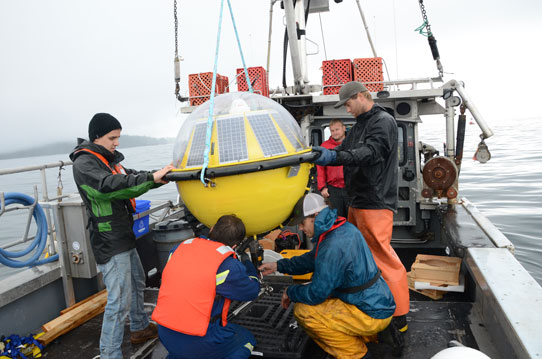Wave forecast and hindcast modelling

The West Coast Wave Initiative (WCWI) uses state of the art modeling software such as Simulation Waves Nearshore (SWAN) along with carefully selected boundary conditions (input data) to produce an unstructured grid simulating conditions at over 130 000 points covering 410 000km2 off the west coast of Vancouver Island (WCVI). An unstructured grid allows for greater resolution near shore and a lower resolution when distant, thereby increasing accuracy where needed and reducing the computational requirements. Additionally, the WCWI uses existing buoys maintained by Environment Canada (EC) and the National Ocean and Atmospheric Administration (NOAA), low resolution wave conditions provided by the European Centre for Medium Range Weather Forecasts (ECMWF) Wave Action Model (WAM), and wind data from the Coupled Ocean/Atmosphere Mesoscale Prediction System (COAMPS) model as boundary conditions for their own model. To ensure the predictions created by the model are correct, data from the four WCWI fully directional wave analysis buoys are used to independently validate the model. The result is a high fidelity wave model for the WCVI region.
Modeling is critical to the development of wave power, as it allows researchers and developers alike to see wave conditions at any point in time included in the boundary conditions across the entire WCVI region. Hindcasting combined with statistical analysis provides the ability to find significant wave height, energy period, omni-directional or maximum directionally resolved wave energy transport, and many other wave condition parameters; therefore providing insight into how the sea behaves on a monthly and yearly basis. This information then allows the WCWI to further determine locations of interest where more research can be done and provides Wave Energy Converter (WEC) developers parameters to optimize their devices.
